Soukayna Mouatadid
Adaptive Bias Correction for Improved Subseasonal Forecasting
Sep 21, 2022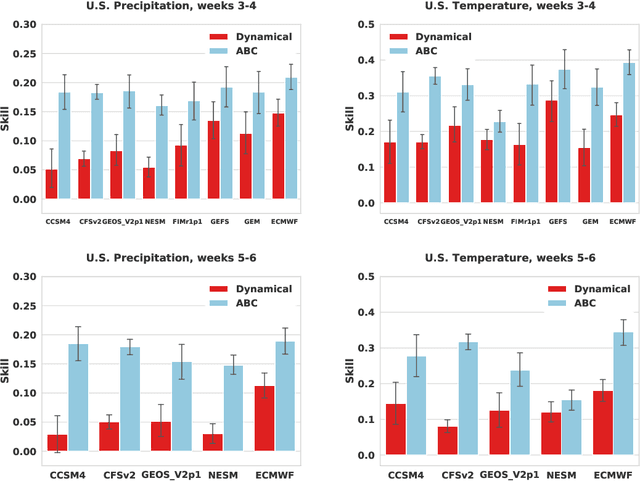
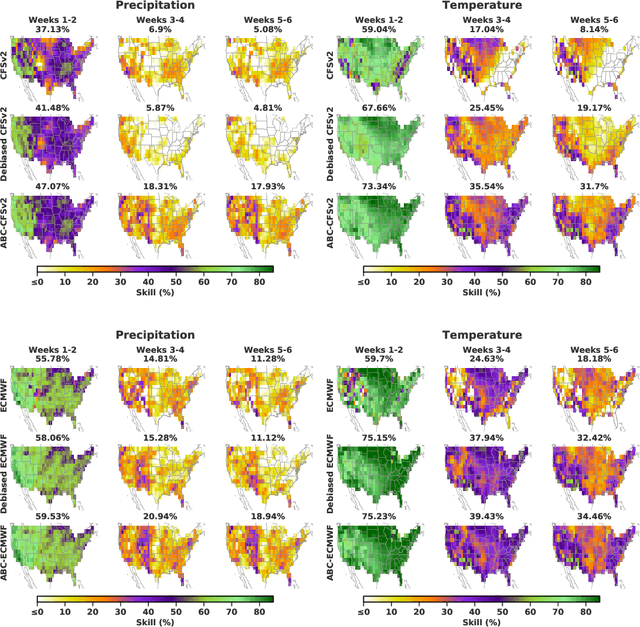
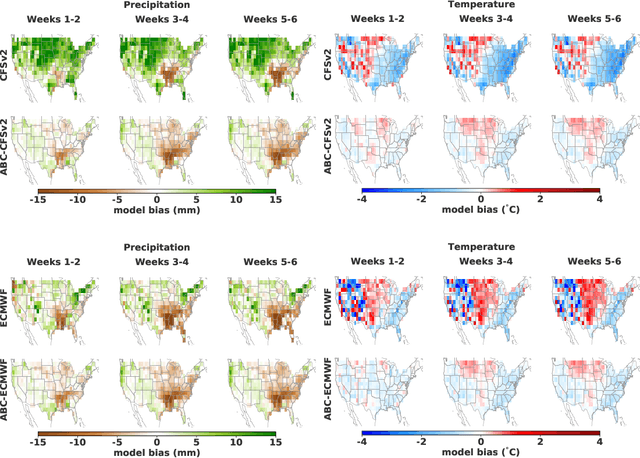
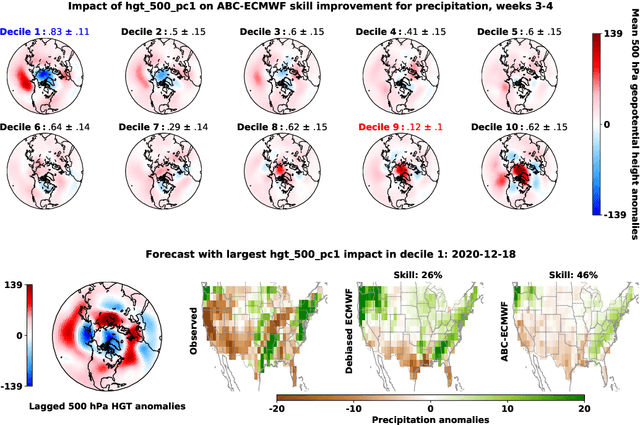
Abstract:Subseasonal forecasting $\unicode{x2013}$ predicting temperature and precipitation 2 to 6 weeks $\unicode{x2013}$ ahead is critical for effective water allocation, wildfire management, and drought and flood mitigation. Recent international research efforts have advanced the subseasonal capabilities of operational dynamical models, yet temperature and precipitation prediction skills remains poor, partly due to stubborn errors in representing atmospheric dynamics and physics inside dynamical models. To counter these errors, we introduce an adaptive bias correction (ABC) method that combines state-of-the-art dynamical forecasts with observations using machine learning. When applied to the leading subseasonal model from the European Centre for Medium-Range Weather Forecasts (ECMWF), ABC improves temperature forecasting skill by 60-90% and precipitation forecasting skill by 40-69% in the contiguous U.S. We couple these performance improvements with a practical workflow, based on Cohort Shapley, for explaining ABC skill gains and identifying higher-skill windows of opportunity based on specific climate conditions.
Learned Benchmarks for Subseasonal Forecasting
Sep 21, 2021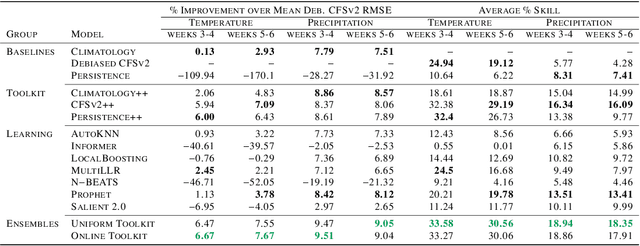

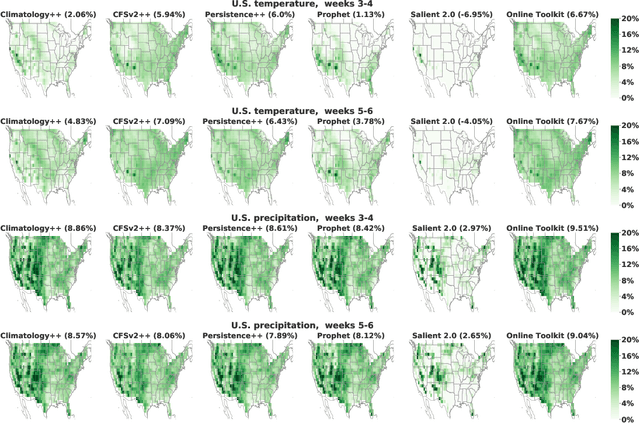

Abstract:We develop a subseasonal forecasting toolkit of simple learned benchmark models that outperform both operational practice and state-of-the-art machine learning and deep learning methods. Our new models include (a) Climatology++, an adaptive alternative to climatology that, for precipitation, is 9% more accurate and 250% more skillful than the United States operational Climate Forecasting System (CFSv2); (b) CFSv2++, a learned CFSv2 correction that improves temperature and precipitation accuracy by 7-8% and skill by 50-275%; and (c) Persistence++, an augmented persistence model that combines CFSv2 forecasts with lagged measurements to improve temperature and precipitation accuracy by 6-9% and skill by 40-130%. Across the contiguous U.S., our Climatology++, CFSv2++, and Persistence++ toolkit consistently outperforms standard meteorological baselines, state-of-the-art machine and deep learning methods, and the European Centre for Medium-Range Weather Forecasts ensemble. Overall, we find that augmenting traditional forecasting approaches with learned enhancements yields an effective and computationally inexpensive strategy for building the next generation of subseasonal forecasting benchmarks.
Online Learning with Optimism and Delay
Jul 12, 2021
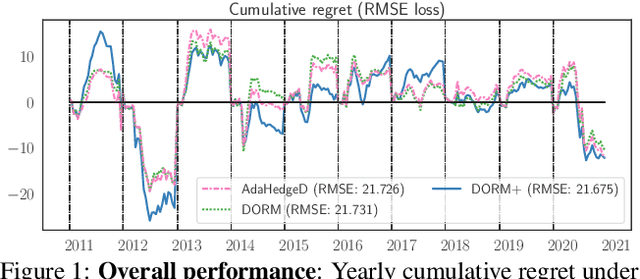
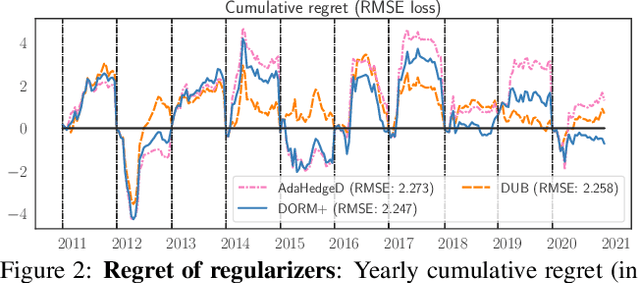

Abstract:Inspired by the demands of real-time climate and weather forecasting, we develop optimistic online learning algorithms that require no parameter tuning and have optimal regret guarantees under delayed feedback. Our algorithms -- DORM, DORM+, and AdaHedgeD -- arise from a novel reduction of delayed online learning to optimistic online learning that reveals how optimistic hints can mitigate the regret penalty caused by delay. We pair this delay-as-optimism perspective with a new analysis of optimistic learning that exposes its robustness to hinting errors and a new meta-algorithm for learning effective hinting strategies in the presence of delay. We conclude by benchmarking our algorithms on four subseasonal climate forecasting tasks, demonstrating low regret relative to state-of-the-art forecasting models.
WeatherBench: A benchmark dataset for data-driven weather forecasting
Feb 12, 2020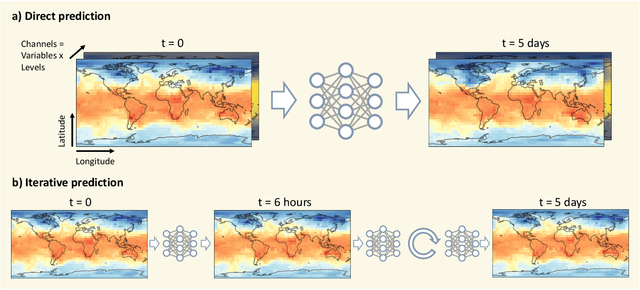
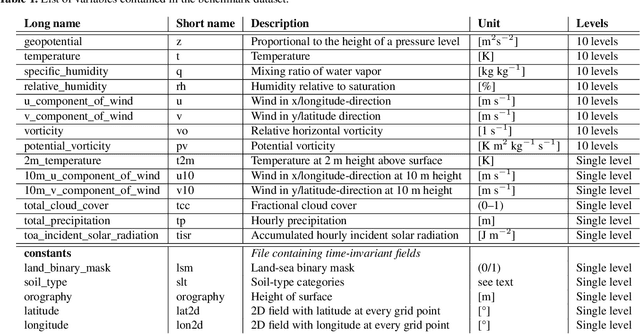
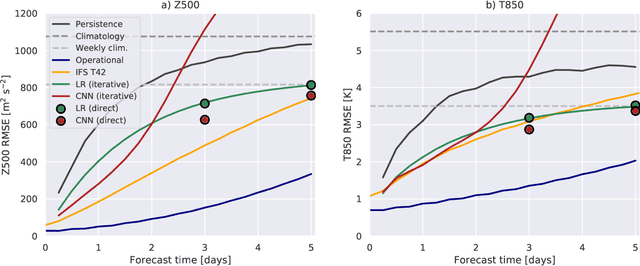

Abstract:Data-driven approaches, most prominently deep learning, have become powerful tools for prediction in many domains. A natural question to ask is whether data-driven methods could also be used for numerical weather prediction. First studies show promise but the lack of a common dataset and evaluation metrics make inter-comparison between studies difficult. Here we present a benchmark dataset for data-driven medium-range weather forecasting, a topic of high scientific interest for atmospheric and computer scientists alike. We provide data derived from the ERA5 archive that has been processed to facilitate the use in machine learning models. We propose a simple and clear evaluation metric which will enable a direct comparison between different methods. Further, we provide baseline scores from simple linear regression techniques, deep learning models as well as purely physical forecasting models. All data is publicly available at https://mediatum.ub.tum.de/1524895 and the companion code is reproducible with tutorials for getting started. We hope that this dataset will accelerate research in data-driven weather forecasting.
Recovering the parameters underlying the Lorenz-96 chaotic dynamics
Jun 16, 2019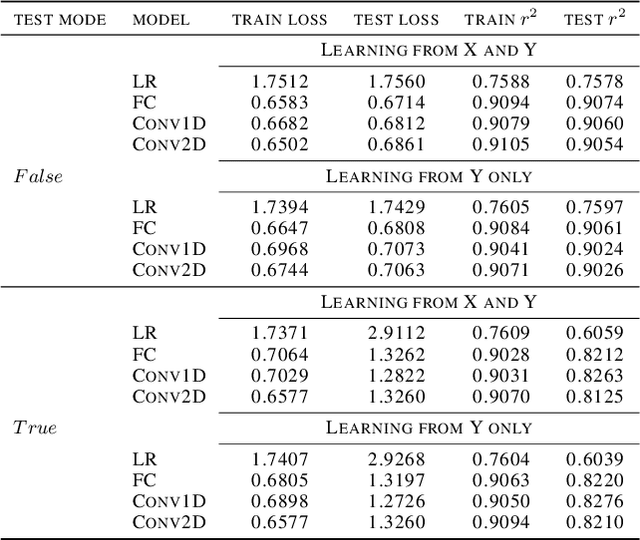
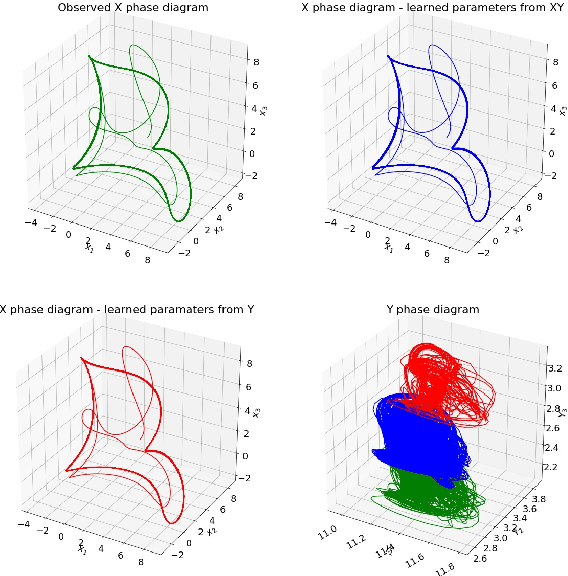
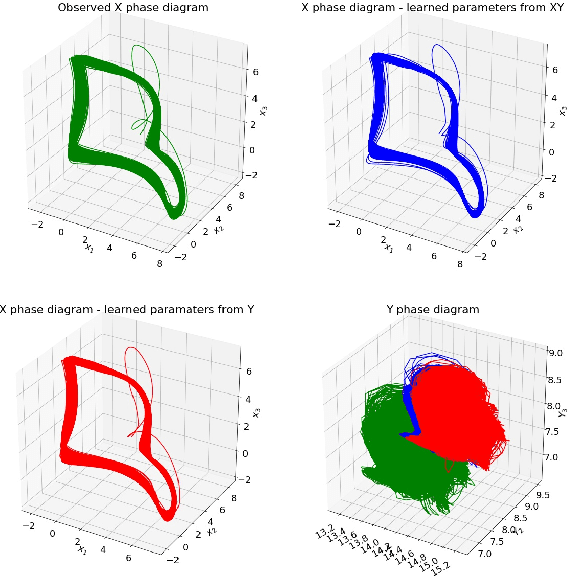
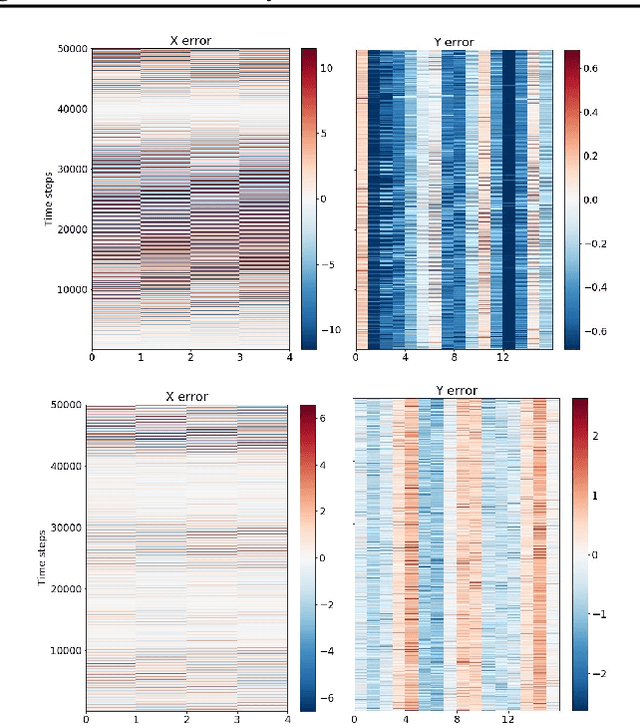
Abstract:Climate projections suffer from uncertain equilibrium climate sensitivity. The reason behind this uncertainty is the resolution of global climate models, which is too coarse to resolve key processes such as clouds and convection. These processes are approximated using heuristics in a process called parameterization. The selection of these parameters can be subjective, leading to significant uncertainties in the way clouds are represented in global climate models. Here, we explore three deep network algorithms to infer these parameters in an objective and data-driven way. We compare the performance of a fully-connected network, a one-dimensional and, a two-dimensional convolutional networks to recover the underlying parameters of the Lorenz-96 model, a non-linear dynamical system that has similar behavior to the climate system.
 Add to Chrome
Add to Chrome Add to Firefox
Add to Firefox Add to Edge
Add to Edge